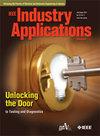Newton-Raphson AC Power Flow Convergence Based on Deep Learning Initialization and Homotopy Continuation
IF 4.2
2区 工程技术
Q2 ENGINEERING, ELECTRICAL & ELECTRONIC
引用次数: 0
Abstract
Power flow forms the basis of many power system studies. With the increased penetration of renewable energy, grid planners tend to perform multiple power flow simulations under various operating conditions and not just selected snapshots at peak or light load conditions. Getting a converged AC power flow (ACPF) case remains a significant challenge for grid planners especially in large power grid networks. This paper proposes a two-stage approach to improve Newton-Raphson ACPF convergence and was applied to a 6102 bus Electric Reliability Council of Texas (ERCOT) system. The first stage utilizes a deep learning-based initializer with data re-training. Here a deep neural network (DNN) initializer is developed to provide better initial voltage magnitude and angle guesses to aid in power flow convergence. This is because Newton-Raphson ACPF is quite sensitive to the initial conditions and bad initialization could lead to divergence. The DNN initializer includes a data re-training framework that improves the initializer's performance when faced with limited training data. The DNN initializer successfully solved 3,285 cases out of 3,899 non-converging dispatch and performed better than random forest and DC power flow initialization methods. ACPF cases not solved in this first stage are then passed through a hot-starting algorithm based on homotopy continuation with switched shunt control. The hot-starting algorithm successfully converged 416 cases out of the remaining 614 non-converging ACPF dispatch. The combined two-stage approach achieved a 94.9% success rate, by converging a total of 3,701 cases out of the initial 3,899 unsolved cases.求助全文
约1分钟内获得全文
求助全文
来源期刊

IEEE Transactions on Industry Applications
工程技术-工程:电子与电气
CiteScore
9.90
自引率
9.10%
发文量
747
审稿时长
3.3 months
期刊介绍:
The scope of the IEEE Transactions on Industry Applications includes all scope items of the IEEE Industry Applications Society, that is, the advancement of the theory and practice of electrical and electronic engineering in the development, design, manufacture, and application of electrical systems, apparatus, devices, and controls to the processes and equipment of industry and commerce; the promotion of safe, reliable, and economic installations; industry leadership in energy conservation and environmental, health, and safety issues; the creation of voluntary engineering standards and recommended practices; and the professional development of its membership.
 求助内容:
求助内容: 应助结果提醒方式:
应助结果提醒方式:


